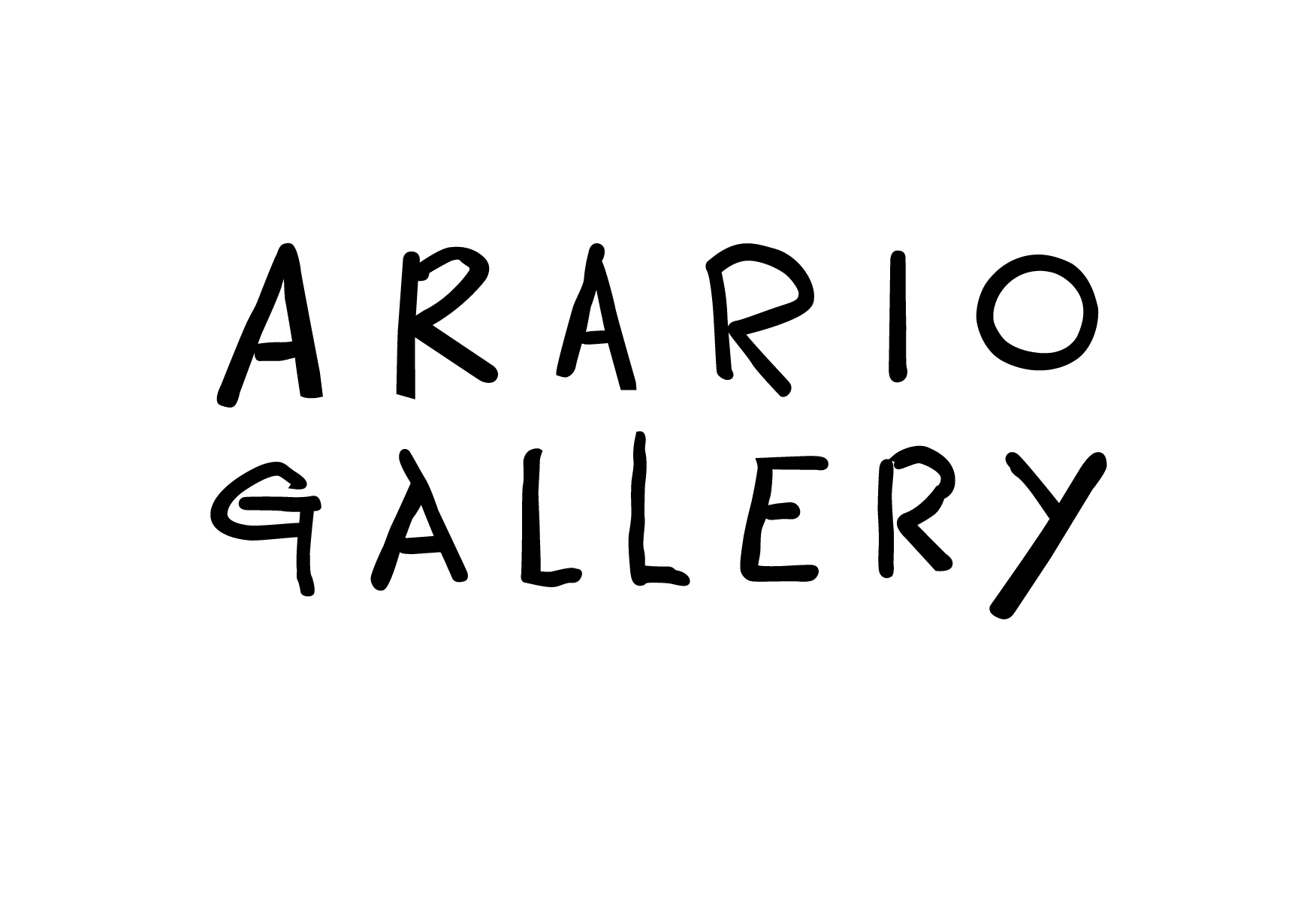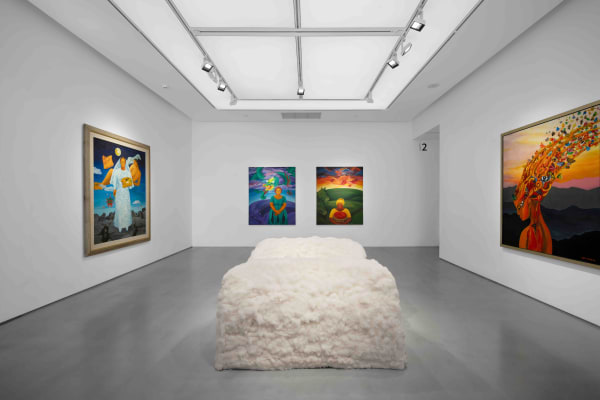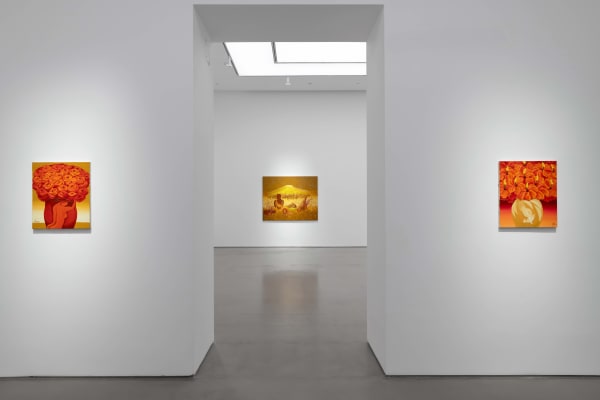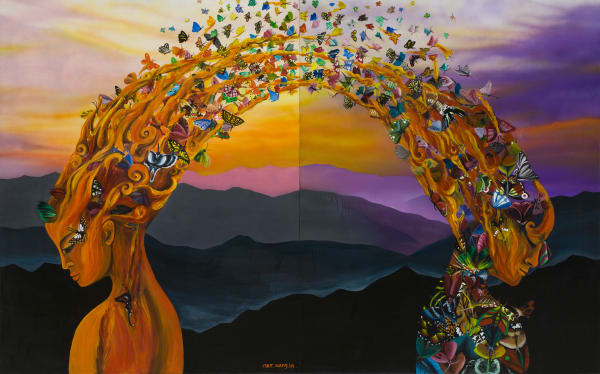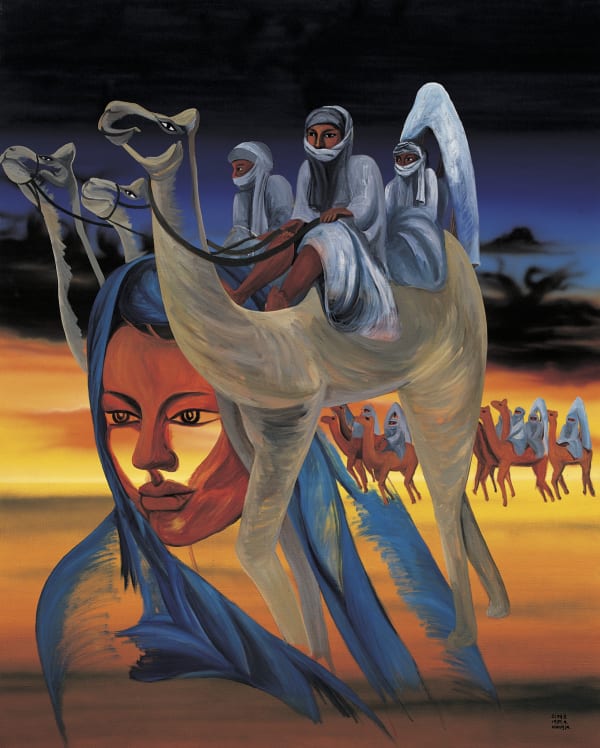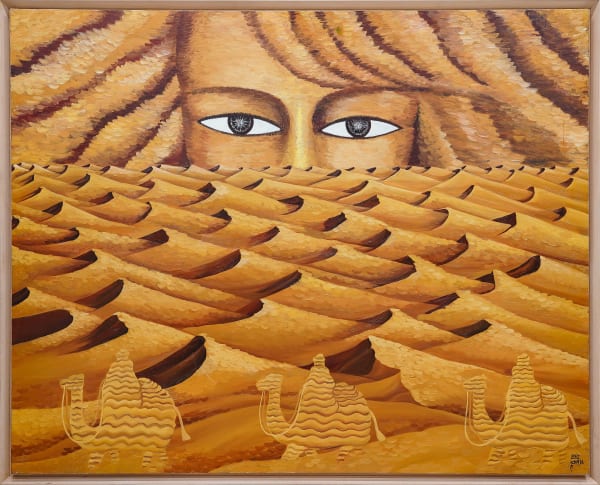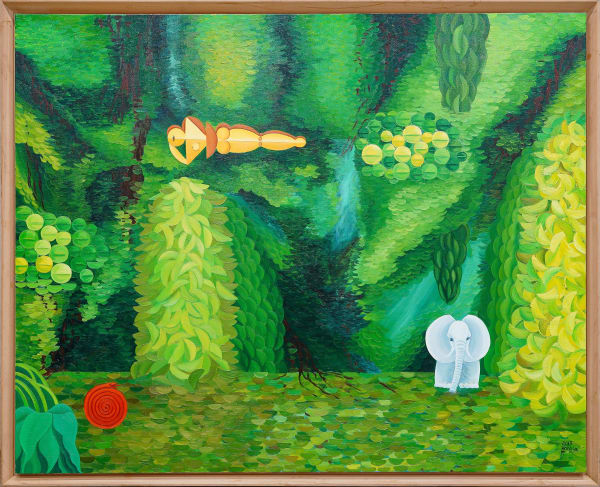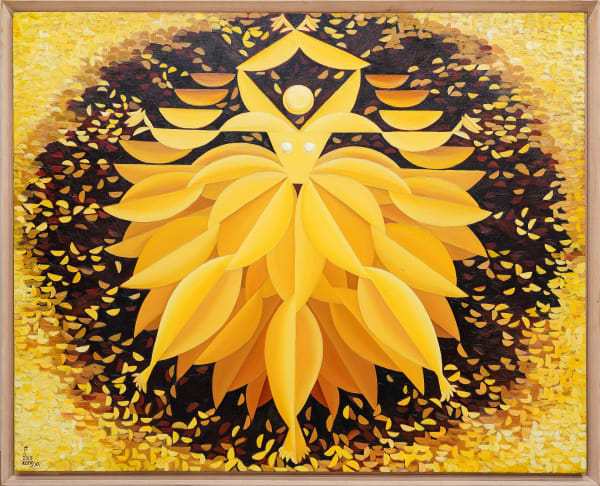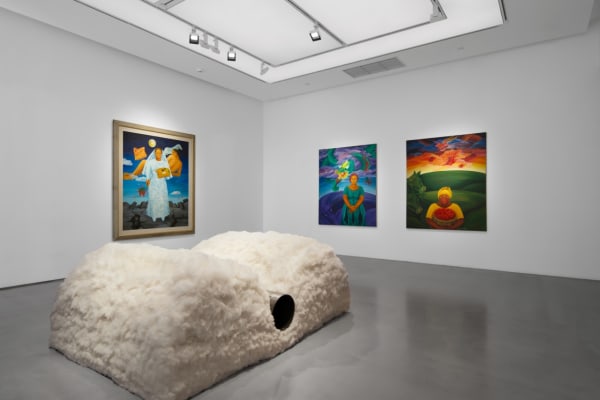JUNG Kangja: LIFE GOES ON
Past exhibition
Press release
ARARIO GALLERY SHANGHAI is pleased to present the solo exhibition of Korean artist JUNG Kangja (1942-2017) from 3 November 2023 to 6 January 2024. The exhibition will include not only paintings from different periods of her career, but also showcase the installation work “To Repress” created in 1968. As a pioneer of performance and experimental art, JUNG has had a profound impact on the Korean art world and even on Korean society. Archives documenting her early artistic practices will also be displayed, offering viewers a more comprehensive picture of JUNG's artistic journey.
During the military dictatorship of the 1960s and 1970s, Korea was experiencing rapid economic growth but social unrest and suppression of citizens' rights. Against this backdrop, JUNG graduated from the western painting department of Hongik University in 1967, and joined the avant-garde Korean art groups "Shin Jeon" and "The Fourth Group." In the same year, she participated in the landmark exhibition titled "Korean Young Artists Association Exhibition", which gathered a group of young artists who challenged the mainstream of art by introducing politics into the context of art, attempting to resist the rigid societal ideologies.
In 1968, JUNG collaborated with Korean artists Kang Kukjin (1939-1992) and Jung Chanseung (1942-1994) on a performance art titled "Transparent Balloons and a Nude (1968)”, in which audience were invited to hang transparent balloons on her half-nude body, subsequently popping them one by one. When all the balloons were burst, JUNG left the stage. The performance itself challenged the conservative social norms of the time. Throughout the performance, JUNG was completely passive and at the mercy of others, and the transparent balloons, on the other hand, served as a tangible metaphor for women's circumstances: from the balloons being affixed to the female body (society's expectations of women's roles) to being burst (the body being gazed and utilized) and their deflation process (gradually losing value as time passes by) until they appeared shriveled (being discarded). The performance revealed the societal situation of most women in that era.
In 1969, the installation "To Repress (1968)" was first displayed at “Hankook Ilbo Invitation Exhibition” in Seoul. It “depicts the oppressed existence of women,” the artist stated. The work consists of the soft cotton pressed down and deformed by a heavy steel pipe, unable to withstand the weight of it. By the comparison of flawless white and mottled rust, soft warmth and rigid coldness, viewers can perceive a palpable tension and sense of pain from the work. Compared to the performance art she created around the same period, this work didn't receive adequate attention. However, the artist herself attached great importance to this work. With the sketch and the photo of the installation, in 2018, this work was remade and exhibited again in the last solo exhibition she prepared before her death.
At the dawn of the 1970s, the Korean government began to impose severe sanctions on radical art movements. In 1977, JUNG moved to Singapore with her family, and returned to Korea five years later. From 1982 onward, she gradually shifted her focus to painting, through which her expression on social consciousness and sense of identity continued. She began to travel frequently to faraway places untouched by modern civilization and drew inspiration from her journeys. She traversed the vast Sahara Desert in Niger, painted lions and giraffes at the foot of Mount Kilimanjaro, and women in the clothing markets of Gambia… This series of works captured the raw vitality of distant lands, and embodied JUNG's fantastic imagination, as well as her dreams and passions.
In the later stages of her artistic career, JUNG continued to seek breakthroughs and new challenges. While she maintained an interest in tangible objects from reality, she was not confined to any specific paradigm. She deconstructed every object into its geometric form of a semi-circle, and believed that circles and straight lines, as the smallest units of all objects in the universe, represent the most fundamental essence. She wanted to liberate herself through “imaginations that I stretch in my own way in an unlimited, free space that is bound to nothing”.
JUNG’s creations at every stage unfolded along with her journey of life and mirrored her dreams and loneliness. She was active at the forefront of Korean experimental art in the 1960s and 1970s, but was underappreciated until 2000, when her artistic achievements were rediscovered and recognized. Recently, JUNG's debut work, "Kiss Me" was showcased in the touring exhibition "Only the Young: Experimental Art in Korea, 1960-1970s", curated by the National Museum of Modern and Contemporary Art (MMCA) in Seoul. The exhibition is currently on view at the Guggenheim Museum in New York and is scheduled to tour the Hammer Museum in Los Angeles early next year.
JUNG's works radiate a vibrant vitality, yet her path of creation has been a lonely and arduous journey. Despite this, she never ceased creating, but regarded art as her life and constantly pursued the dream of ideal. Now, she left us, but her spirit will continue to exist alongside her works.
Installation Views
Works
Press
